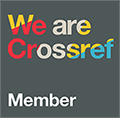The Views of Pre-service EFL Teachers on Teaching Assistant Practice in Language Teaching
DOI:
https://doi.org/10.33308/26674874.2024382716Keywords:
Teaching Assistance, Teaching Assistance Practice, Teaching Quality, Teaching Assistantship in EFL Practices, EFL Teacher EducationAbstract
The purpose of the study is to analyze the views on Teaching Assistant Practice (TAP) gathered from five senior English Language Teaching (ELT) students. The primary aim is to investigate and reveal how TAP affects EFL pre-service teachers’ teaching quality. The study was designed using a qualitative approach and a purposive sampling approach. The data was collected using open-ended questions and was analyzed using the qualitative content analysis approach. Based on the evidence, significant themes regarding the TAP were discovered. The following were the themes: excelling on pedagogical content knowledge and teaching quality, raising awareness, and improving teacher roles, the benefits of being professionally present as a teacher in the classroom, and the enhancement of multitasking. It was concluded that with the responses obtained from the prospective teachers, the themes mentioned create a positive atmosphere for them to sharpen their practical teaching skills in a professional sense.
Downloads
References
Abrami, P. C., Bernard, R. M., Borokhovski, E., Waddington, D. I., Wade, C. A., & Persson, T. (2015). Strategies for teaching students to think critically: A meta-analysis. Review of Educational Research, 85(2), 275–314. https://doi.org/10.3102/0034654314551063 DOI: https://doi.org/10.3102/0034654314551063
Bernard, H.R. (2002). Research methods in anthropology: Qualitative and quantitative approaches (3rd Ed.). Alta Mira Press.
Boei, F., Dengerink, J., Geursen, J., Kools, Q., Koster, B., Lunenberg, M., & Willemse, M. (2015). Supporting the professional development of teacher educators in a productive way. Journal of Education for Teaching, 41, 351–368. https://doi:10.1080/02607476.2015.1080403 DOI: https://doi.org/10.1080/02607476.2015.1080403
Borg, S. (2006). The distinctive characteristics of foreign language teachers. Language Teaching Research, 10(1), 3–31. https://doi.org/10.1191/1362168806lr182oa DOI: https://doi.org/10.1191/1362168806lr182oa
Brooks, V., & Sikes, P. (1997). The good mentor guide: Initial teacher education in secondary schools. Open University Press. https://doi.org/10.1080/0141192970230204 DOI: https://doi.org/10.1080/0141192970230204
Buckley, J. W., & Chiang, H. (1976). Research methodology and business decisions. Natl Assoc of Accat.
Byram, M. (1997). Teaching and assessing intercultural communicative competence. Multilingual Matters.
Campbell, S., Greenwood, M., Prior, S., Shearer T., Walkem K., Young S., Bywaters D., & Walker K. (2020). Purposive sampling: complex or simple? Research case examples. Journal of Research in Nursing, 25(8), 652–661. https://doi:10.1177/1744987120927206 DOI: https://doi.org/10.1177/1744987120927206
Creswell, J. W. (2014). Research design: qualitative, quantitative, and mixed methods approaches (4th ed.). Sage Publications.
Crotty, M. (1998). The foundations of social research: meaning and perspective in the research process. Sage.
Cummins, J. (2001). Bilingual children’s mother tongue: Why is it important for education? Sprogforum, 7, 15-20. Dale, E. (1969). Audio-visual methods in teaching (3rd ed.). Holt, Rinehart & Winston. https://doi.org/10.1080/09523986908547873 DOI: https://doi.org/10.1080/09523986908547873
Datnow, A., & Hubbard, L. (2016). Teacher capacity for and beliefs about data-driven decision making: A literature review of international research. Journal of Educational Change, 17, 7–28 https://doi.org/10.1007/s10833-015-9264-2. DOI: https://doi.org/10.1007/s10833-015-9264-2
Dincer, A., Goksu, A., Takkac, A., & Yazici, M. (2013). Common characteristics of an effective English. The International Journal of Educational Researchers, 4(3), 1–8.
Downe‐Wamboldt, B. (1992). Content analysis: method, applications, and issues. Health Care for Women International, 13(3), 313-321. https://doi.org/10.1080/07399339209516006 DOI: https://doi.org/10.1080/07399339209516006
Dörnyei, Z. (2007). Research methods in applied linguistics: Quantitative, qualitative, and mixed methodologies. Oxford University Press.
Elo, S., & Kyngäs, H. (2008). The qualitative content analysis process. Journal of Advanced Nursing, 62(1), 107-115. https://doi.org/10.1111/j.1365-2648.2007.04569.x DOI: https://doi.org/10.1111/j.1365-2648.2007.04569.x
Freeman, D. (2002). The hidden side of the work: teacher knowledge and learning to teach. A perspective from North American educational research on teacher education in English language teaching. Language Teaching, 35(1), 1-13. http://dx.doi.org/10.1017/S0261444801001720. DOI: https://doi.org/10.1017/S0261444801001720
Hammarberg, K., Kirkman, M., & de Lacey, S. (2016). Qualitative research methods: when to use them and how to judge them. Human Reproduction, 31(3), 498-501. https://doi.org/10.1093/humrep/dev334 DOI: https://doi.org/10.1093/humrep/dev334
Harvey, L. (1994). Continuous quality improvement: a system-wide view of quality in higher education. In P. Knight (Ed.) University-wide change, staff and curriculum development, staff and educational development association (pp.47-70). SEDA Paper.
Ho, S. K., & Wearn, K. (1995). A TQM model for higher education and training. Training for Quality, 3(2), 25–33. https://doi.org/10.1108/09684879510087503 DOI: https://doi.org/10.1108/09684879510087503
Inbar-Lourie, O. (2008). Constructing a language assessment knowledge base: A focus on language assessment courses. Language Testing, 25(3), 385-402. https://doi.org/10.1177/0265532208090158. DOI: https://doi.org/10.1177/0265532208090158
Harris, J., & Hofer, M. (2011) Technological Pedagogical Content Knowledge (TPACK) in action. Journal of Research on Technology in Education, 43(3), 211-229. https://doi.org/10.1080/15391523.2011.10782570 DOI: https://doi.org/10.1080/15391523.2011.10782570
Lee, J. J. (2010). The uniqueness of EFL teachers: Perceptions of Japanese learners. TESOL Journal, 1(1), 23–48. https://doi.org/10.5054/tj.2010.214881 DOI: https://doi.org/10.5054/tj.2010.214881
Lenkauskaitė, J. (2020). Service-learning in problem solving in the community: Pre-service teachers’ reflection on their experience. Social Welfare: Interdisciplinary Approach, 1(10), 67–81. https://doi.org/10.21277/sw.v1i10.523 DOI: https://doi.org/10.21277/sw.v1i10.523
McKeegan, P. (1998). Using undergraduate teaching assistants in a research methodology course. Teaching of Psychology, 25(1), 11-14. https://doi.org/10.1207/s15328023top2501_4 DOI: https://doi.org/10.1207/s15328023top2501_4
Odom, F. S., Ho, P. S., & Moore, L. L. (2014). The Undergraduate Leadership Teaching Assistant (ULTA): A high-impact practice for undergraduates studying leadership. Journal of Leadership Education, 13(2), 152-161. https://doi.org/10.12806/V13/I2/A2 DOI: https://doi.org/10.12806/V13/I2/AB2
Palinkas, L. A., Horwitz, S. M., Green, C. A., Wisdom, J. P., Duan, N., & Hoagwood, K. (2015). Purposeful sampling for qualitative data collection and analysis in mixed method implementation research. Administration and Policy in Mental Health, 42(5), 533–544. https://doi.org/10.1007/s10488-013-0528-y DOI: https://doi.org/10.1007/s10488-013-0528-y
Patton, M. Q. (2002). Two decades of developments in qualitative inquiry: A personal, experiential perspective. Qualitative Social Work, 1(3), 261-283. https://doi.org/10.1177/1473325002001003636 DOI: https://doi.org/10.1177/1473325002001003636
Popham, W. J. (1993). Educational evaluation. Simon and Schuster Publishing, Inc.
Sahney, S., Banwet, D. K., & Karunes, S. (2004). Conceptualizing total quality management in higher education. The TQM Magazine, 16(2), 145–159. https://doi.org/10.1108/09544780410523044 DOI: https://doi.org/10.1108/09544780410523044
Schreier, M. (2012). Qualitative content analysis in practice. SAGE Publications. https://doi.org/10.4135/9781529682571 DOI: https://doi.org/10.4135/9781529682571
Shulman, L. S. (1986). Paradigms and research programs in the study of teaching: A contemporary perspective. In M.C. Wittrock (Ed.), Handbook of research on teaching (pp. 3-36). Macmillan.
Spradley, J. P. (1979). Ethnography and culture. In J. P. Spradley (Ed.), The ethnographic interview (pp. 3). Brace Jovanovich College Publishers.
Stearns, P. N., & Gienow-Hecht, J. C. (2010). Emotions history in the United States: Goals, methods, and promise. In Jessica CE Gienow-Hecht (Ed.) Emotions in American history: An international assessment (pp.15-27). Berghahn Books.https://doi.org/10.1515/9781845458195-005 DOI: https://doi.org/10.1515/9781845458195-005
Stronge, J. H. (2007). Qualities of effective teachers (2nd ed.). ASCD.
Wang, M. C., Haertel, G. D., & Walberg, H. J. (1993). Towards a knowledge base for school learning. Review of Educational Research, 63, 249-294. https://doi.org/10.3102/00346543063003249 DOI: https://doi.org/10.3102/00346543063003249
Downloads
Published
How to Cite
Issue
Section
License
Copyright (c) 2024 Journal of Education for Life

This work is licensed under a Creative Commons Attribution-NonCommercial-NoDerivatives 4.0 International License.
I accept that the Owner of Journal of Education for Life, the Editor, Associate Editors, Reviewers and the Editorial Board cannot be hold responsible regarding the scope, the findings, the discussion and conclusion of the manuscript submitted.
I declare to the editorship of Journal of Education for Life that the manuscript is original and has not been published anywhere else or is not under evaluation process for any other journal.
I approve that I grant Journal of Education for Life as the sole and exclusive right and license to publish for the full legal term of copyright of my manuscript concurring with article 5846 / 22-23-25 while I retain copyright in the work.





